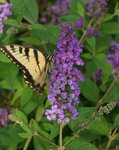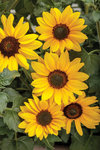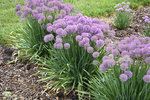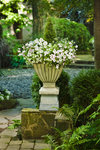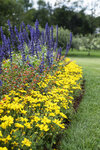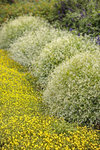Perennials Articles
Enjoy this just-for-fun list of plants with spooky names…‘tis the season for ghouls and ghosts galore and orange and black décor too!
I wish I could claim this idea as my own, but it is one I learned of a few years ago when I visited the University of Tennessee Gardens in Knoxville. They had several different gardens that would surely appeal to children, including a garden gnome village and a hobbit house to explore. However, the garden that caught my eye was the Plant Zoo. The plant zoo was planted with varieties whose names referenced animals of all kinds. Sometimes the names were specific plant names, like Tiger Lily, but others were common names like Lambs Ear. The tags in the garden used outlines of the animal in the plant name. I love the concept and I think this would be easy enough to pull off in your home garden with your kids or grandkids helping. Such an easy way to get a child interested in a garden! The plant tags the University had, might not be easily replicated. However, if you want to ID your plants, I think clip art, Sharpies, river rocks, and mod podge would allow the kids to make rock markers for your zoo garden in no time!
Have you seen the dinner plate-sized Hibiscus blooming around town this summer? They are easier to grow than you might think, even if you live someplace with very cold winters. Here are five helpful tips for growing your own glorious Summerific® Hibiscus.
Bees are essential pollinators and gardeners can help sustain native bee populations by planting flowers that bees can feed upon. These 20 yellow annuals, perennials, and shrubs are good plants to incorporate in your bee-friendly garden.
Our gardens are many things rolled into one entity. They are often simultaneously a source of beauty, a way to exercise, a boost to our mental health, a source of fresh food, a spot to relax, the background for family get-togethers and parties with friends, and with a bit of planning they can provide a wealth of flowers and foliage to create one of a kind cut-flower arrangements.
White can be a great addition to any garden, but is especially important for gardens that will be enjoyed most often early in the morning and in the evening. White and silver plants tend to glow in the low light, while darker colors fade into the background. Using white can make your garden more inviting when the light wanes. These 27 container combination recipes use primarily white flowers, with a few light colors and the occasional dark color to round out the options.
Looking to fill a few large spaces in your garden beds quickly? Check out this useful pictorial guide to fast growing annuals, perennials and shrubs for landscapes.
Classic blue is a serene, calming color perfect for our current times. Who these days isn’t looking for some serenity in their lives? While flowers are the most obvious way to add blue to your garden, blue foliage, blue berries and even blue paint can all help create a calming oasis right outside your door. Here are 46 blue plants to consider for your garden.
Proven Winners is all about trialing plants for years before deciding to add them to our line. One of the criteria we test for is if the plant will perform well for home gardeners, with ease. You can be confident that these low-maintenance plants will surpass your expectations, without much help from you.
Gain some helpful tips about how to care for perennial plants including which types benefit from deadheading, how often to fertilize and divide, and much more in this informative article.




